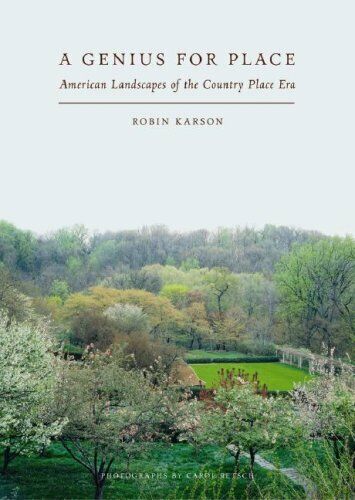A Genius for Place: American Landscapes of the Country Place Era
A Genius for Place: American Landscapes of the Country Place Era
Couldn't load pickup availability
In this beautifully illustrated survey, Robin Karson traces the development of a distinctly American style of landscape design through an analysis of seven country places created by some of the nation's most talented landscape practitioners.
In the mid-nineteenth century Frederick Law Olmsted, the designer of New York's Central Park, developed an approach to landscape design based on the principles of the English Picturesque which also emphasized a specifically American experience of nature and scenery. After Olmsted's retirement in 1897, these precepts continued to ground a new generation of American landscape architects through the next four decades, a period known as the "country place era," a time of rapid economic, social, and cultural change.
In the early twentieth century, new fortunes made it possible for wealthy Americans to commission country estates as a means of aggrandizing social status. These private havens also offered their owners respite from crowded cities and a way to preserve and celebrate places of distinctive landscape beauty. The commissions provided burgeoning numbers of landscape architects with opportunities to experiment with stylistic influences derived from Beaux-Arts, Arts and Crafts, and even Asian principles.
Hardcover. 432 pages. 9.75 x 1.13 x 11.75 inches
Share


